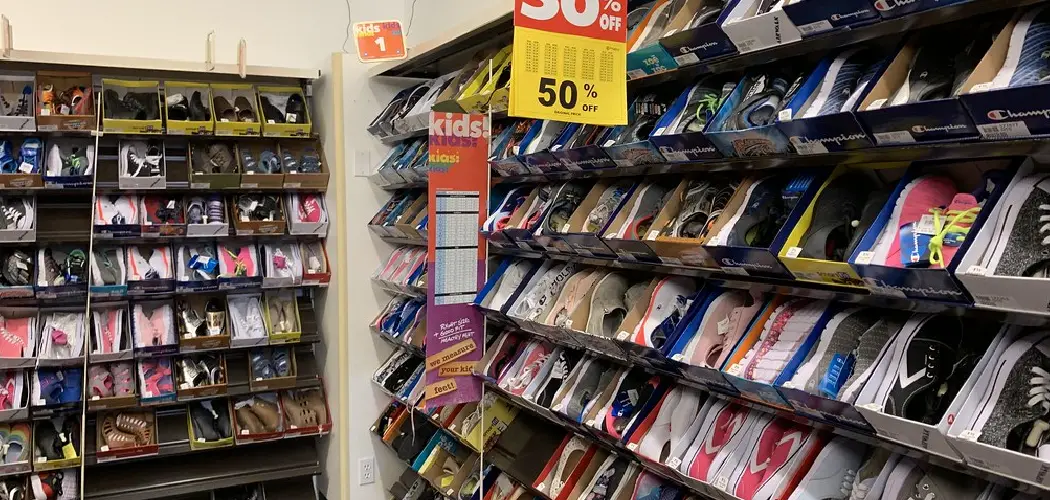Finding adequate space to store a growing collection can be challenging for many shoe enthusiasts, especially when dealing with bulky or seasonal footwear like winter boots or summer sandals. The need for extra storage space is common, and a storage unit can provide an ideal solution for maintaining an organized collection. Proper shoe storage is crucial as it not only prevents potential damage but also helps maintain the shoes’ shape and ensures they remain in pristine condition for future use.
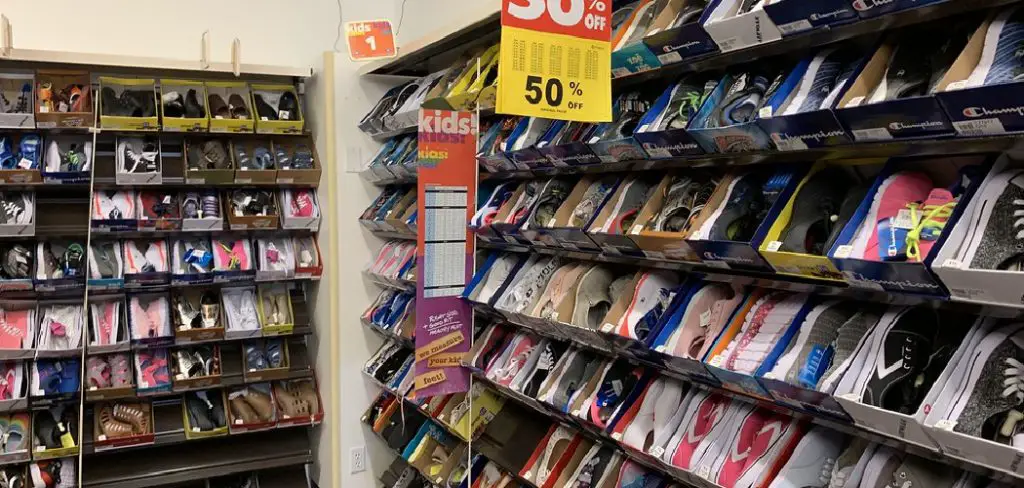
This article serves as a comprehensive guide on how to store shoes in storage unit settings effectively. By walking through essential preparation steps, packing techniques, and storage practices, readers will learn how to maximize space, protect their investment, and keep shoes in great condition for every season.
Prepping Shoes for Storage
1. Clean Shoes Thoroughly Before Storing
Before storing your shoes, it’s imperative to clean them thoroughly to remove any dirt, salt, or grime that can cause damage over time. For leather shoes, use a soft cloth or brush to wipe away surface dirt and apply a quality leather cleaner followed by a leather conditioner to preserve softness. Suede shoes require special care; use a suede brush to gently remove dirt and stains, and consider applying a suede protector to guard against future wear.
Sneakers can be cleaned by removing the laces and insole and then washing the surface with mild soap and water. Be sure to also address the soles, using a brush to scrub away any debris, ensuring every part of the shoe is clean and ready for storage.
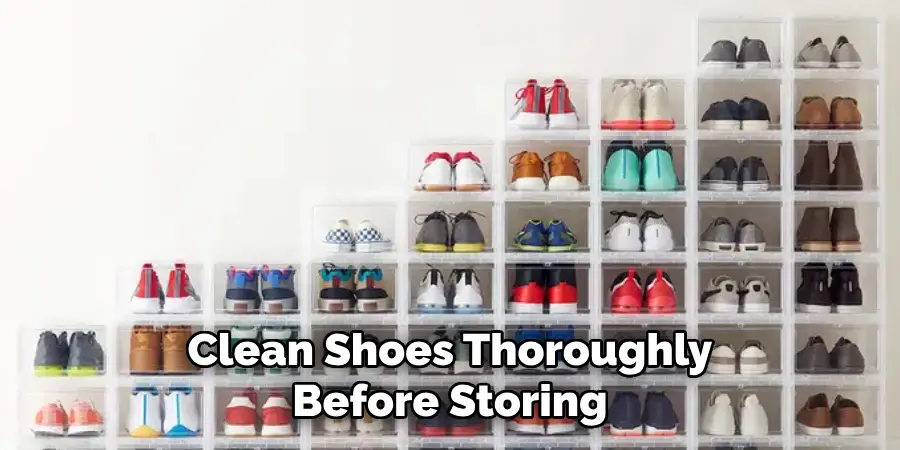
2. Ensure Shoes Are Completely Dry
Once cleaned, shoes must be completely dry before being stored to prevent the formation of mold and mildew. After cleaning, air-dry your shoes by leaving them out overnight in a well-ventilated area. For faster drying, you can stuff shoes with newspaper to absorb excess moisture or use a shoe dryer specifically designed for this purpose. It’s crucial to ensure that every part of the shoe, from the outer material to the inner sole, is dry to avoid any long-term moisture damage.
3. Consider Applying Protective Products
To further safeguard your shoes, consider applying protective products before storage. A water-repellent spray can particularly benefit suede and other delicate materials, creating a barrier against moisture and dirt. Fabric protectors are also useful for sneakers, adding an extra layer of defense against stains. Conditioning leather shoes with a good-quality product can keep the leather supple and prevent cracking during storage. By taking these precautions, you ensure that your shoes remain in excellent condition throughout their time in storage.
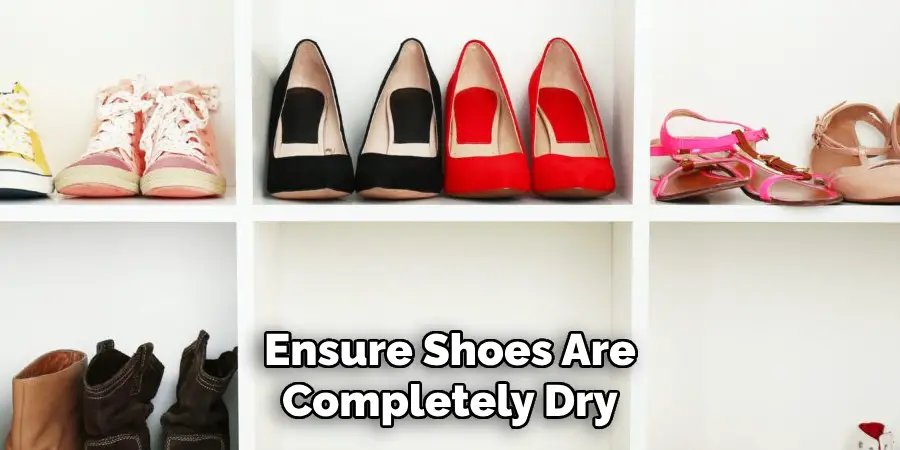
How to Store Shoes in Storage Unit: Packing Shoes for Long-Term Storage
1. Wrap Delicate or Expensive Shoes Individually
When preparing high-quality or delicate shoes for long-term storage, wrapping them individually is crucial to maintain their pristine condition. Use tissue paper or soft cloth to enclose each shoe, ensuring the material fully covers surfaces prone to scuffing. This protective layer shields shoes from dust and scratches and helps retain their shape. Avoid using plastic wraps, as they can trap moisture, leading to mold or mildew. Instead, opt for breathable materials that allow air circulation while providing adequate coverage. Treating each shoe pair with extra care protects your investment from potential storage damages.
2. Organize Shoes by Season or Type
To easily access your shoe collection, consider organizing them by season or type before packing. Group similar footwear, such as winter boots or summer sandals, together, ensuring you can quickly locate specific pairs when needed. Likewise, separating shoes into categories like formal and casual helps maintain order and reduces searching time. Utilize dividers or separators within larger containers to create distinct sections for different shoe types. This structured approach optimizes space and ensures individual pairs remain intact and easy to identify, providing a streamlined storage experience.
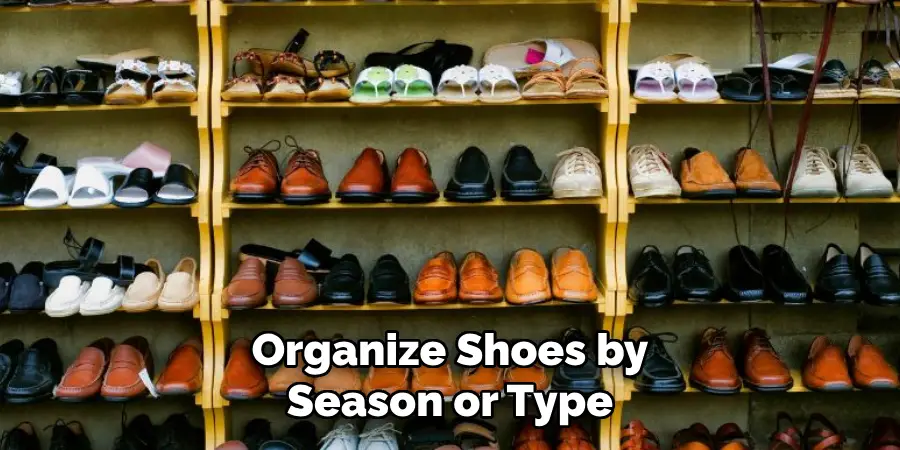
3. Use Moisture Absorbers or Desiccants
Protecting shoes from dampness during long-term storage requires vigilant moisture control. Placing moisture absorbers, such as silica gel packets, charcoal bags, or other desiccants, inside storage containers is an effective strategy to combat humidity. These products actively absorb excess moisture, preserving the integrity of the shoes’ materials. It’s important to periodically check and replace these absorbers to maintain their effectiveness, ensuring continuous protection. Monitoring for signs of moisture, such as musty odors or visible dampness, and taking action when necessary will keep your shoes dry and ready for wear when retrieved from storage. By implementing these moisture-control measures, you extend the lifespan of your shoe collection while ensuring optimal preservation conditions.
Selecting the Right Storage Unit
1. Choose a Climate-Controlled Storage Unit
Opting for a climate-controlled storage unit is essential for preserving the quality of your shoe collection, particularly when dealing with sensitive materials like leather and suede. These units maintain a consistent temperature and humidity level, which helps prevent shoes from warping, cracking, or discoloring due to extreme environmental changes. Keeping conditions stable ensures that your shoes remain optimal regardless of how long they are stored. Additionally, avoid storing shoes in places where temperatures can fluctuate significantly, as this can compromise the integrity of the materials.
2. Ensure the Storage Unit is Clean and Pest-Free
Before committing to a storage unit, inspect it thoroughly for cleanliness and any signs of pests. A clean and well-maintained unit minimizes the risk of insects and rodents damaging your shoes. Look for indicators such as droppings or nibble marks and inquire about the facility’s pest control measures. To further protect your collection, consider placing natural pest deterrents like cedar blocks or lavender sachets within the unit. These keep pests at bay and leave a pleasant scent without damaging delicate shoe materials.
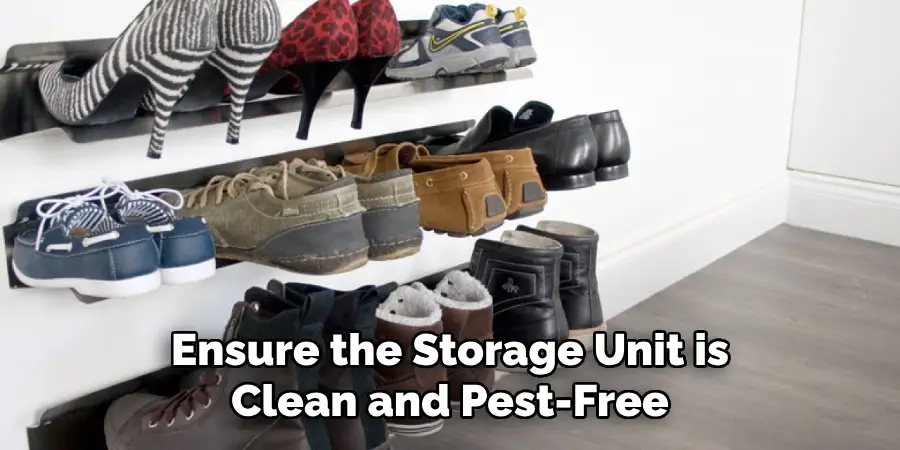
3. Consider the Size and Layout of the Storage Unit
Selecting the right size storage unit is crucial for organizing your shoe collection efficiently. Ensure the unit is spacious enough to allow for easy organization and quick access to each pair. Consider using vertical space by incorporating shelving units or stacking containers to maximize storage capacity. This arrangement keeps shoes orderly and protected and makes it convenient to rotate or inspect your collection without digging through piles of boxes. By thoughtfully considering the size and layout of your storage unit, you maintain an organized and accessible collection.
Organizing Shoes Inside the Storage Unit
1. Place Shoes Off the Ground
It is vital to keep your shoes off the storage unit’s floor to protect them from flooding or dust accumulation. Use pallets, shelves, or sturdy plastic containers to elevate your shoes. This shields them from unexpected water damage and enhances air circulation, preventing moisture buildup. Shelving units can offer tiered storage, allowing for better organization and maximizing the available space. By implementing these measures, you create a safeguard against damage and contribute to a cleaner, more organized storage environment.
2. Stack Boxes or Containers Strategically
When stacking boxes or containers, prioritize accessibility by keeping frequently used or seasonal shoes on top. Arrange the containers to allow easy access to the most commonly needed footwear without disrupting the entire setup. Clear, visible labeling on the outside of each container will save you time and effort when locating specific pairs. By incorporating an effective labeling system, you streamline the process of finding and retrieving shoes, enhancing the overall efficiency of your storage solution.
3. Maintain an Inventory of Stored Shoes
Developing a simple inventory list of stored shoes can greatly enhance the organization and management of your collection. Depending on your preference, this inventory can be created digitally or on paper. Number each container and include corresponding descriptions or even photos of each pair of shoes for easy reference. By routinely updating this inventory, you maintain a clear overview of what is stored, facilitating better organization and assisting in quickly retrieving shoes whenever needed. This practice ensures that all shoes are accounted for and helps prevent any items from being overlooked.
Tips for Maintaining Shoes During Storage
1. Check the Storage Unit Regularly
Regular visits to the storage unit are essential for ensuring the ongoing protection of your shoe collection. Inspect the shoes for any signs of damage, mold, or pests, paying particular attention to hidden areas that may harbor these issues. If your shoes are stored for long periods, airing them out briefly can help prevent musty odors and mold growth. Rotating footwear, especially seasonal items, will also assist in maintaining their shape and preventing long-term stress on any particular pair.
2. Refresh Moisture Absorbers and Air Out Containers
Maintaining dry conditions is key to preserving your shoes, so it’s important to replace moisture absorbers like silica gel packets or charcoal bags every few months. This proactive measure helps prevent humidity from degrading shoe materials. Additionally, periodically open storage containers to allow fresh air circulation, checking for any unpleasant odors. Consider using natural odor eliminators, such as baking soda or essential oil sachets, to keep your shoes smelling fresh.
3. Keep Shoes Away from Direct Light or Heat Sources
Direct sunlight or heat exposure can lead to fading, discoloration, or damage to shoe materials. To prevent this, ensure your storage unit lacks direct light or heat sources. If there’s a risk of light exposure, cover your boxes or containers with a blanket or tarp to shield them. This extra layer of protection helps maintain your shoes’ original appearance and integrity, ensuring they remain in excellent condition during storage.
Conclusion
In summary, knowing how to store shoes in storage unit involves several crucial steps to ensure their preservation. Begin by cleaning and packing your shoes properly, then select a clean, pest-free storage unit of the right size and layout. Organize your shoes effectively by placing them off the ground and stacking containers strategically. Regularly maintain shoes by checking the unit, refreshing moisture absorbers, and protecting them from light and heat. Investing in quality storage materials and staying organized is essential. With proper storage, your footwear remains in excellent condition, ready for use whenever needed.
About
Angela is the chief editor of Indoorense. She began her career as an interior designer before applying her strategic and creative passion to lifestyle and home.
She has close to 15 years of experience in creative writing and online content strategy for housekeeping and cleaning,home decorations as well as other efforts.
She loves her job and has the privilege of working with an extraordinary team. She lives with her husband, two sons, and daughter in Petersburg. When she’s not busy working she spent time with her family.

